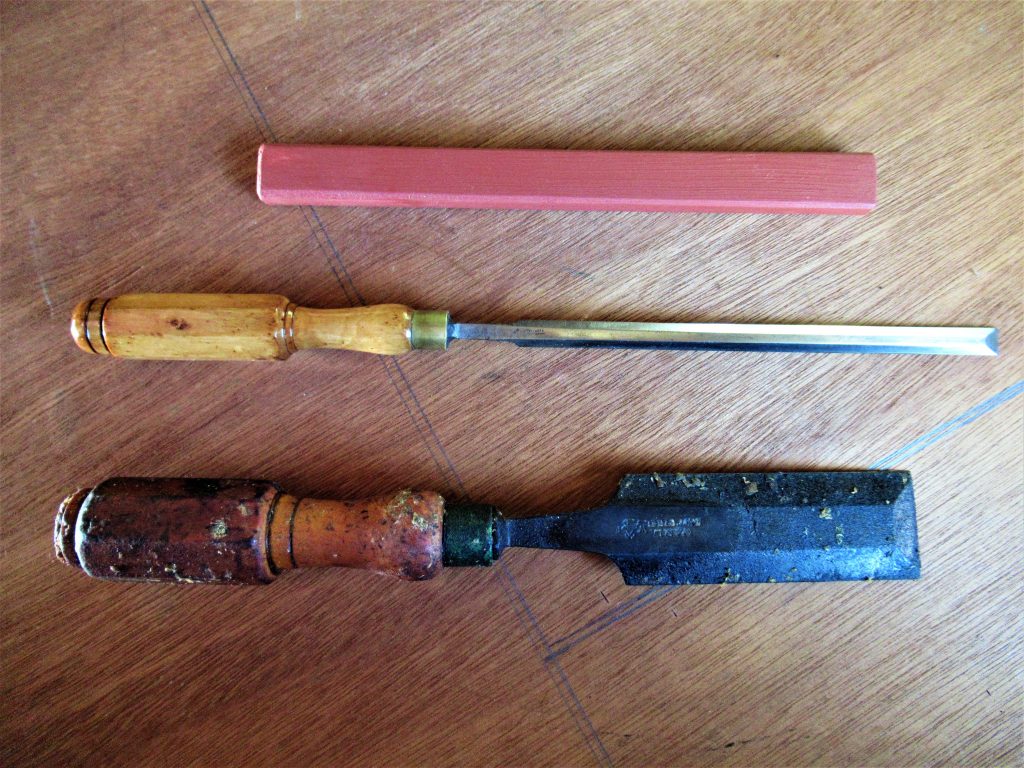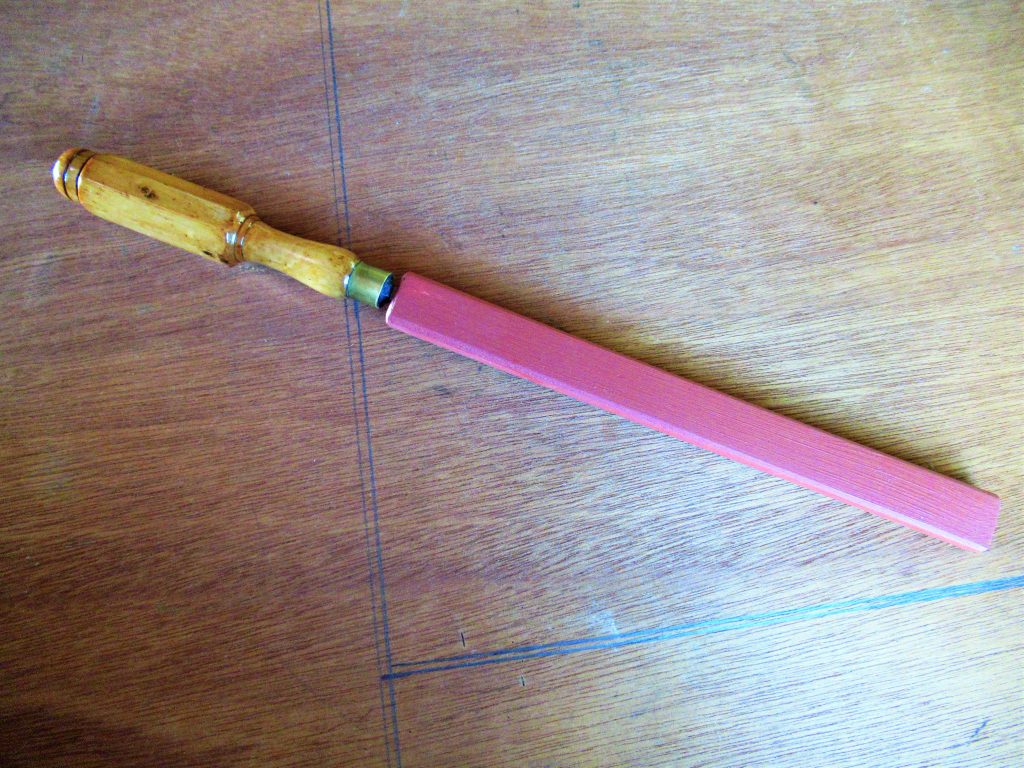I was fortunate recently to be given a box of assorted old tools. I was told that they belonged to a joiner or cabinet maker who worked at the Eveleigh Carriage Workshops in Sydney. He left them in his house when it was sold and the purchaser kept them. He eventually passed them on to the husband of a friend of mine and they ended up with me. They do not appear to have been used during the intervening years and were well coated with linseed oil.
There is a number of interesting tools but amongst the chisels two with London Pattern handles caught my eye. I could not resist dropping other jobs and tackling one of them.

London Pattern handles have the central portion octagonal. This provides a comfortable grip and also ensures that the tool does not roll off the bench. The remainder is turned with a half-round button at the end which is comfortable in the palm of the hand when applying pressure.
Boxwood is a very slow growing small tree. There are many varieties with subtle differences. Boxwood is a very hard wood with very dense grain and, when freshly cut, a pale yellow colour. Because boxwood is so dense, air drying takes years. Boxwood tool handles were used on higher-end tools that were not meant to be struck.
I wiped the accumulated dirt and oil from the handle, wiped it with a de-greasing fluid and then scraped the surface with a very sharp chisel blade. Some of the linseed oil staining has penetrated too deeply to be removed but the surface of the yellow-white boxwood was gradually revealed. I took care not to round edges or spoil the contours of the handle. When I was satisfied with it, I wiped on three or four coats of shellac and followed this with one coat of polyurethane varnish to protect the surface.
The blade was cleaned of surface corrosion with a succession of abrasive-rubber pads in increasing grits and then polished with wet and dry abrasive paper to 1000 grit. Minor pitting remains but this can be worked out in future polishing and will not affect the cutting edge. The primary bevel has been decreased to under 25°. The secondary bevel will be just over 25°.
While cleaning the underside of the blade I was able to decipher the worn impression of the William Marples, Sheffield stamp and the Shamrock trade mark.
William Marples made a huge range of chisels for woodworking and many other trades. Chisels types were offered with a variety of handles, beech, ash and boxwood and a variety of handle designs which included the octagonal “London Pattern”. The best and most expensive of each category were the chisels with boxwood London pattern handles.
This chisel is a ⅜ inch paring chisel. Paring is a chisel operation in which the chisel is used to shave precise amounts of wood from the work. The goal here is control – otherwise any chisel and a mallet can do the work. There are three important features of a paring chisel:
A handle to push with the hand and not designed for mallets and never hammers. Of the paring chisel’s three features, this one is the least distinctive. Thin handles put the weight of the chisel at the cutting edge so that the tool is easier to manoeuvre and cut the finest shaving.
Length of blade. The chisel is used two handed. One hand holds the long slender, blade near the cutting edge to guide it and the other provides the motive power from the handle.
Low Cutting Angle. The lower the cutting angle, the lower the forces needed to advance the chisel in the wood. This means more control. While bench chisels are usually set at 25° from the factory, paring chisel show up at 20° — or even less. This translates to an edge that is very fragile but possesses a superb cutting ability.
This chisel is ⅜ inches (approx. 9.53mm) wide. The blade has wide bevels or grounds so that it will fit into the corners of a dovetail socket. The blade is very shallow and tapered along its length. This restoration has rescued an attractive and useful high quality chisel which was probably made in Sheffield a century or more ago. With care it will provide many more years of precision work.
This chisel is ⅜ inches (approx. 9.53mm) wide. The blade has wide bevels or grounds so that it will fit into the corners of a dovetail socket. The blade is very shallow and tapered along its length. This restoration has rescued an attractive and useful high quality chisel which was probably made in Sheffield a century or more ago. With care it will provide many more years of precision work.

The photographs show the completed paring chisel with the wooden blade guard made for it and also by way of comparison the Ward and Payne 1½ inch bevel edged bench chisel in its uncleaned state The paring chisel was in like condition. The Ward chisel handle has been abused with a hammer but fortunately the handle is not split. The blade guard or sheath is painted so that it is not inadvertently discarded with off-cuts.
Martin
